White Bishop to B3, Queen to D3... Pope's Quay Has Chess Tables
This Thursday, two permanent chess tables made from Cork limestone and Carrara marble will be unveiled on the banks of the Lee at Pope's Quay. Tripe+Drisheen went to see how it all came together.
When the complete history of Cork is written, there will be a special entry for Thursday April 27, 2023 for it was (or will be, as it’s tomorrow) on that day that Cork finally joined the pantheon of other great cities including New York, Paris, Berlin, Tokyo, Cairo and Istanbul which all have permanent chess boards installed in a public setting.
So bring on the grandmasters and chess novices. To Pope’s Quay.
1.The King
If you’ve been on Pope’s Quay in the past few days, you might have noticed the addition of two chess tables and some stone seating which were installed this past weekend outside Myo Café near Shandon Bridge. Weighing in at nearly half a tonne, the chess tables are made from Cork limestone, and they’re going to be around for a good long time. And hopefully for a good time.
There’s a few characters that are central to the story of how those chess tables came to be and ended up there, but first up is Liam Mullaney, owner of Myo Café.
Almost as soon as Liam opened Myo at 34 Pope’s Quay on the north channel of the River Lee nine years ago, he had the idea to do something with the space near the river.
“I was walking around the area, I was visualising a cafe, a meeting place, important hubs for the communities. In that then, I’m looking at the demographics around the area and I’m kind of thinking how does it all come together?”
“And I just saw the chess boards even then. I saw them down along the quay wall. I just saw them in my mind’s eye,” Liam told me this week.
Liam tucked the idea for the chess tables away, but hauled it out last year when he heard about the placemaking scheme operated by Cork City Council. Placemaking sounds like a concept schemed up in a committee by a battalion of bureaucrats or academics, and likely it was in multiple symposiums and conferences across multiple continents, but what it boils down to is activating public spaces which are ‘dead’ or underused.
Or as Liam eloquently put it, “turning a space into a place.”
Crucially, the placemaking grant provides funding because an idea without euros, dollars or yen behind it is usually dead on arrival. Especially ideas that involve the word public.
Liam’s grand vision had always been to do something that “would engage the multicultural nature of the area.”
So he read the placemaking brief form the City Council. And then he made a move across the board.
Enter Tommy Lysaght, the stone carver.
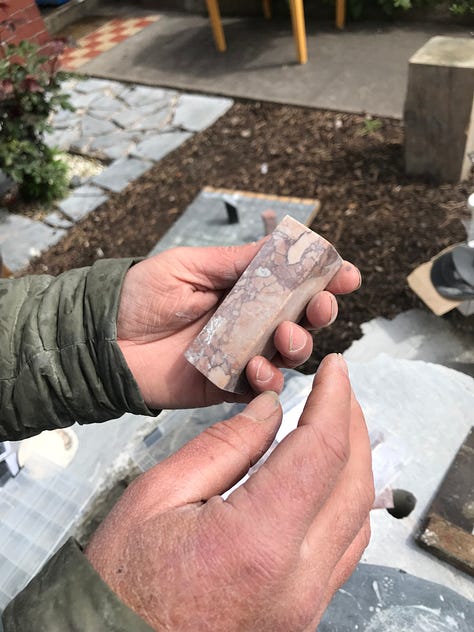
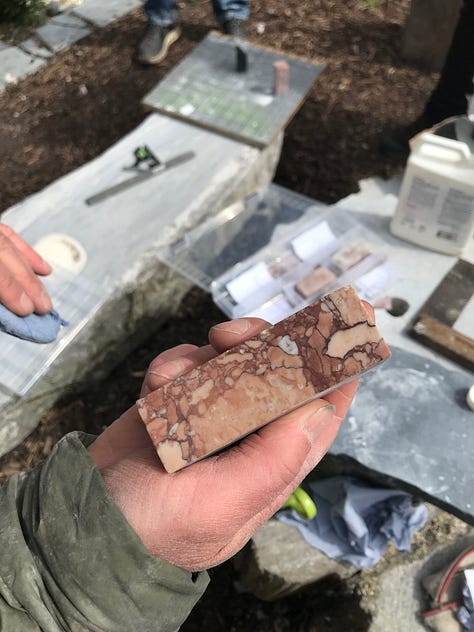
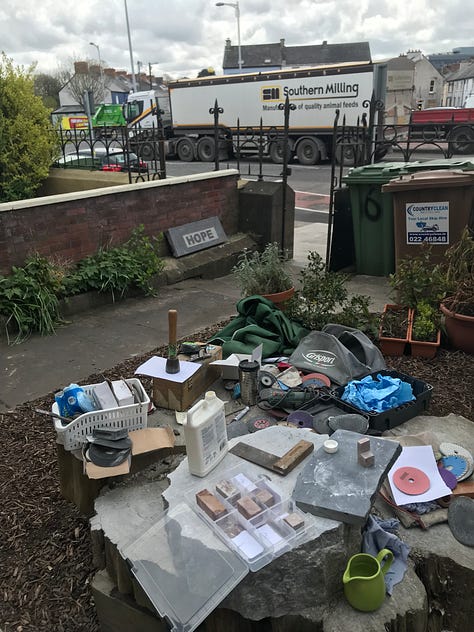
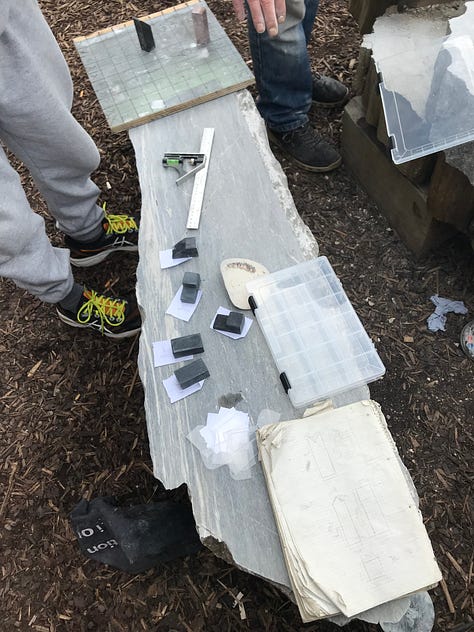
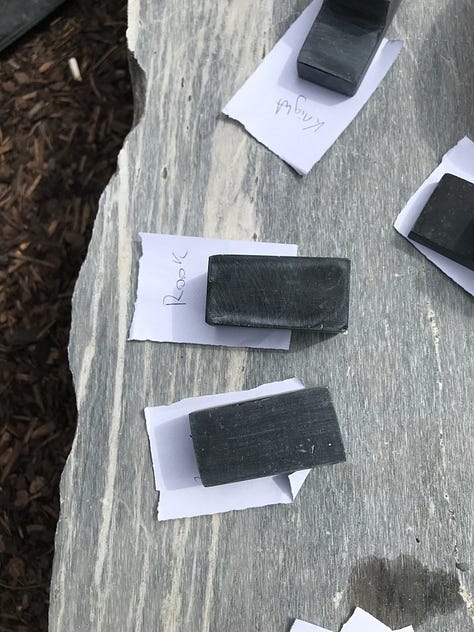
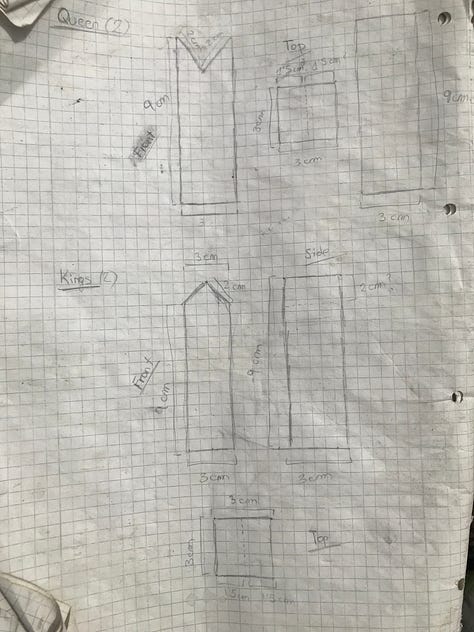
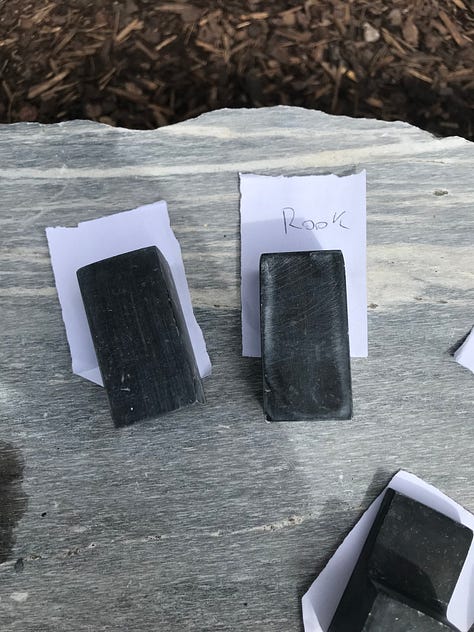
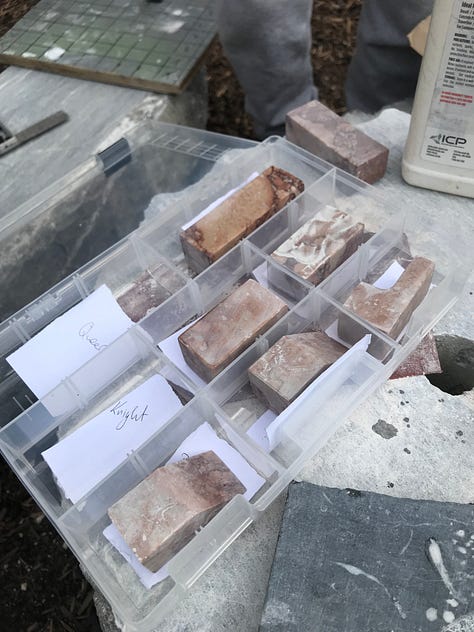
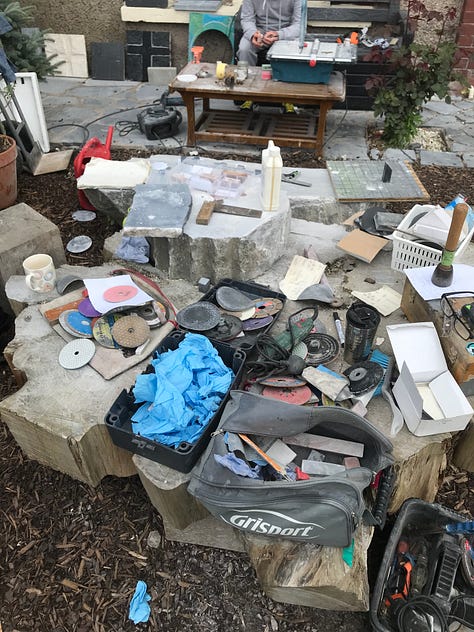
2.The Knight
Neither Liam nor Tommy knew each other prior to Liam’s idea to get chess tables on Pope’s Quay, but somewhere in the background, a chess master was making moves, and Tommy Lysaght’s phone number ended up with Liam.
“He rang me and asked me if I’d like to make a few chess tables for the city, and I said yes. And I hadn’t met him before,” Tommy, originally from Fermoy and now living in Crosshaven, told me this week when we met.
“And anyway, long story short, I met Liam, we got on grand. I was going to make chess tables from Kilkenny limestone.”
At this point, Tommy gives me a brief history lesson: Pope’s Quay is made from Cork limestone. In fact, much of Cork was made of Cork limestone (although there are bits of Kilkenny limestone in the mix too) before it was made of concrete and glass.
However, Tommy really wanted to carve the chess tables from Cork limestone, but sourcing it was a bridge too far, especially as quarries such as Beaumont and Little Island, where it was sourced, are long closed.
But, Tommy also couldn’t let go of the notion to make them with Cork limestone, and he said he’d have one more crack at trying to find some before they got down to the business end of making the tables. Indeed, the quest to find Cork limestone only increased after a trip up the harbour during the Lee swim last summer. From the boat, Tommy spotted building after building made with Cork limestone on Spike Island and pretty much everywhere he went in the harbour.
So at this point, Tommy dialed in Jim Fahy, a stonemason with the City Council, who in true Cork fashion says, “leave it to me.”
The next call from Jim was an instruction to meet in Mahon. Because that’s where they found three massive columns discarded and covered over with vegetation. They had in a previous life most likely anchored a ‘Big House’ quite possibly in Tivoli, although the exact provenance is still unknown. But those columns, made from Cork limestone, would be cut to size and turned into chess tables, are now in situ down on Pope’s Quay outside Myo Café.
3. Bishop, rooks, pawns and volunteers
But then Tommy had an idea or several of them, and thought, “If we’re going to be making chessboards and seating and chess pieces for the community, shouldn't we get the community in on this?”
And that’s when he turned the project over to members of Cork Simon’s Education and Training program who have, for the past four months, been sketching, carving, and polishing onyx from Pakistan, marble from Italy, and Cork limestone.
Through his work with Cork Education and Training Board, Tommy’s been working with dozens of members of the Education and Training program on stone carving projects, but this one is a bit special.
Tommy said they’ve also been supported by a small army of volunteers, including Mick Wilkins of Kilnageary Studios, artist Davy Duignan, stonemason Jim Fahy, and O’Connell Stone suppliers in Begley’s Forge.
Through his work Tommy told me that he’s faciliated various projects to create pieces for schools and localities, and he’s seen what a positive impact it can make.
“I’ve seen how great it is for a people’s mental health and their sense of achievement to work together on something that benefits the wider community. There has been so much care and attention put into these tables so that they can be enjoyed and appreciated by everyone. And I’ve no doubt that they will be, for years to come,” he said.
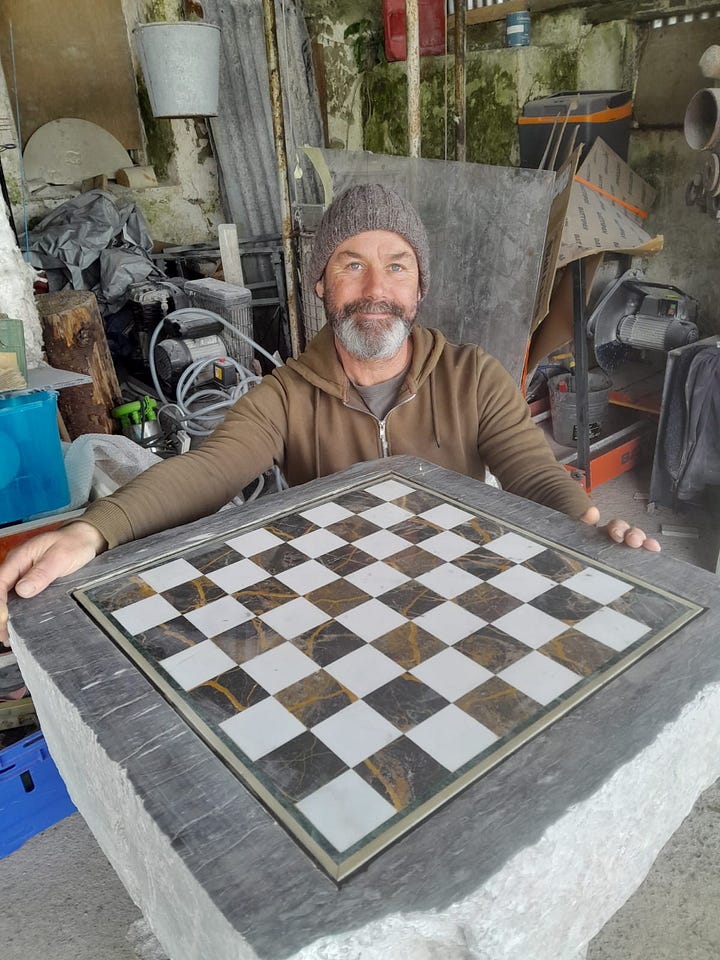
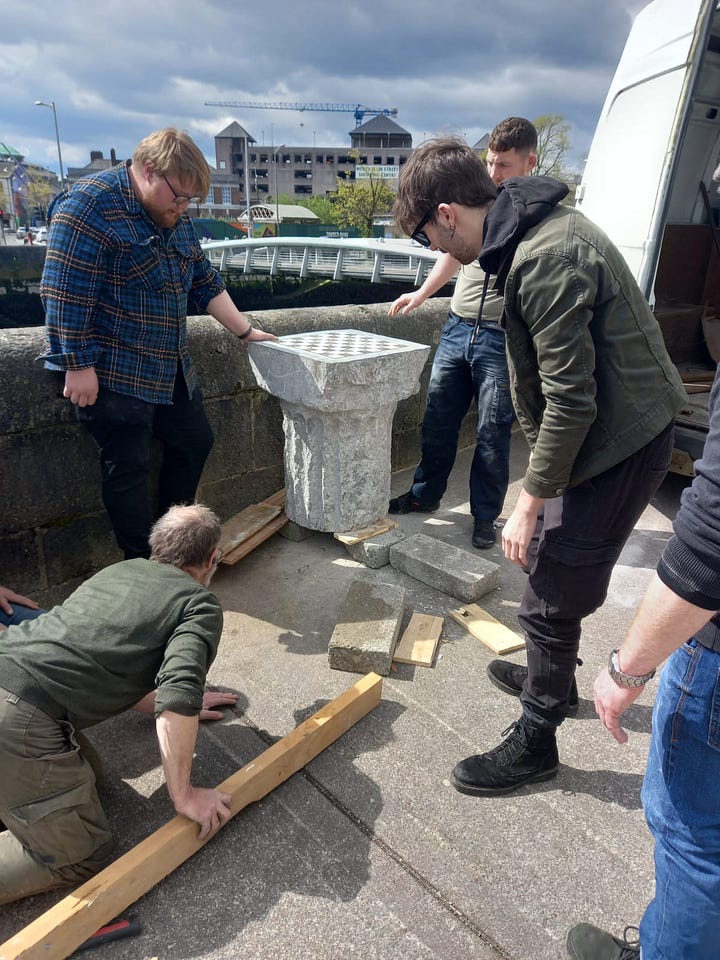
Tommy is clearly a man who loves stone, or to quote the title of Seamus Murphy’s autobiography, he’s "stone mad about stone." And he’s conscious of the heritage aspect of the chess table project and of paying homage to the stone carvers and stonemasons who came before, but also of bringing back a foundational piece of Cork and transforming it.
For Tommy, making the chess tables from Cork limestone was a way to bring generations to come into contact with our past.
“When there's kids coming down from the Northside with their sisters, mothers, grandfathers, they're going to want to go over and see the chess tables. That's giving them the connection to the stone, and they’re a step closer to making a connection with Seamus Murphy. That’s central to what we’re doing here too,” Tommy said.
A friend of Tommy’s who heard about the project wrote a short poem, which Tommy shows me as we stand amidst slabs of stone. As Tommy says, what’s nice is that the poem starts with the key stone, which was forgotten and abandoned before it was transformed and restored to its rightful place in the city.
“And now it's back in the city and starting up its new life again, and we’re taking a step back now and it’s taking on a whole new life,” said Tommy.
When I visited one of the workshops this week, there was a sense of purpose and orderly disarray. All but a few of the pieces had been carved; the rest were being polished up and put into boxes. The design of the chess pieces is strong, bold, and modern. These are pieces that are built to last, and they’ll be kept behind the counter in Myo.
To play, you can either bring your own chess or draughts set or borrow the Cork-made pieces from Myo for a small deposit. Liam said that money will be donated to the Simon Community, which could, in turn, help with the training and education program.
In total, there are three chess tables. One will be going up in the Life Centre, where Tommy also works - the students up there have been drafted into help - with the other two installed on the quay.
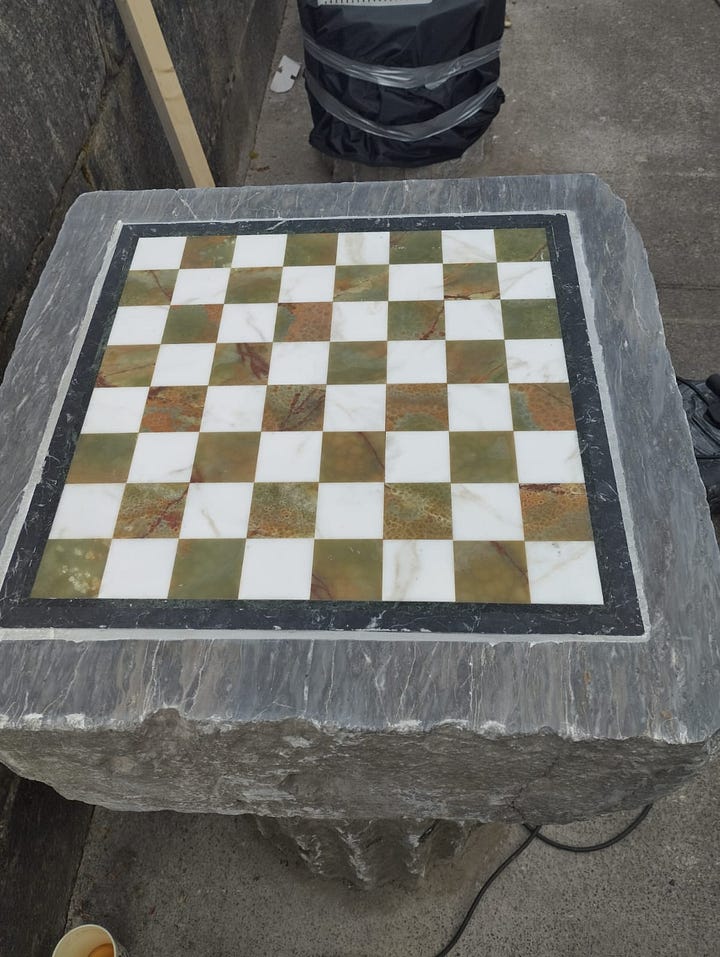
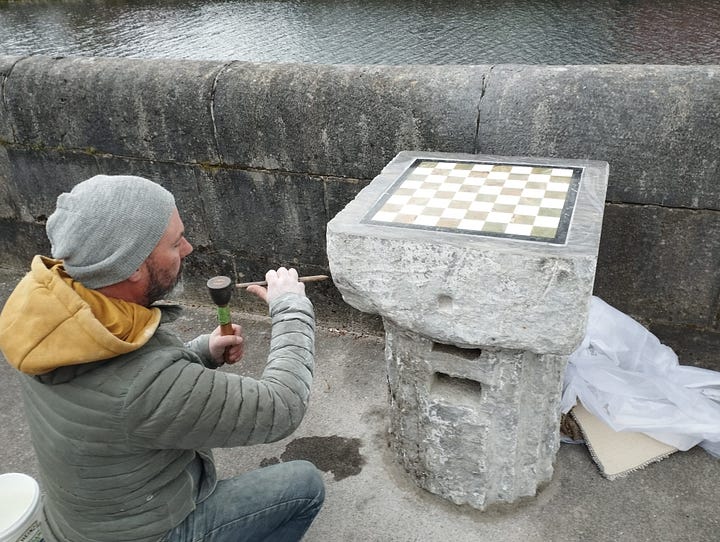
One of the quay tables has seating, also made from the limestone columns, and the other is wheelchair accessible.
If you visit, make sure to check out the carving and designs on the seats.
Even though the tables have only been installed a handful of days, Liam says they look like “they’re growing up out of the ground, as if they’ve always been there. They really lift the whole quay.”
And they do.
Maybe it’s the fact that the base of the tables is made from Cork limestone, the quay is Cork limestone, that they fit so well.
Or maybe it’s the indelible crafting and the designs on the seats or the gleaming Italian marble from Carrara.
Or maybe it’s the fact that this little corner beside the quay wall in Cork city is a marriage of inspiration, imagination, design, and community.
Or maybe because, as Liam says, this little space is now a place, a place to play chess - or draughts - for anyone and everyone in the community and the city.
The last stanza of “Chess Column” written by Tommy’s friend Fray is a good place to sign off:
Now kings and queens grace Pope’s Quay
Where grandkids play grandmasters
And old Cork limestone regains its place
In a city cut from madness
Cork’s Lord Mayor Deirdre Forde will unveil the Pope’s Quay chess tables ths Thursday April 27 at 1pm. Stevie G will be on the decks and and the public is invited to come along and watch the inaugural games, which will be played by members of Cork’s CCYMS chess club.
A sculpted dog trough on St. Patrick's Street has faded from memory, if not from sight
When sculptor Séamus Murphy was commissioned to make a trough for the thirsty dogs of Cork back in the 1950s he probably didn’t expect it to end up largely forgotten and mostly filled with discarded cigarette butts. Sadly, that’s the state of the limes…

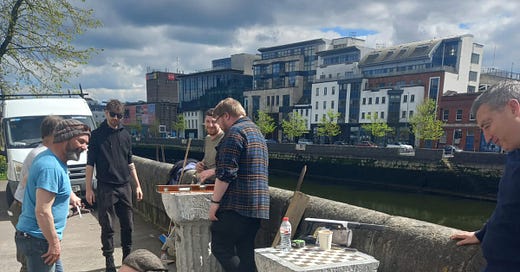







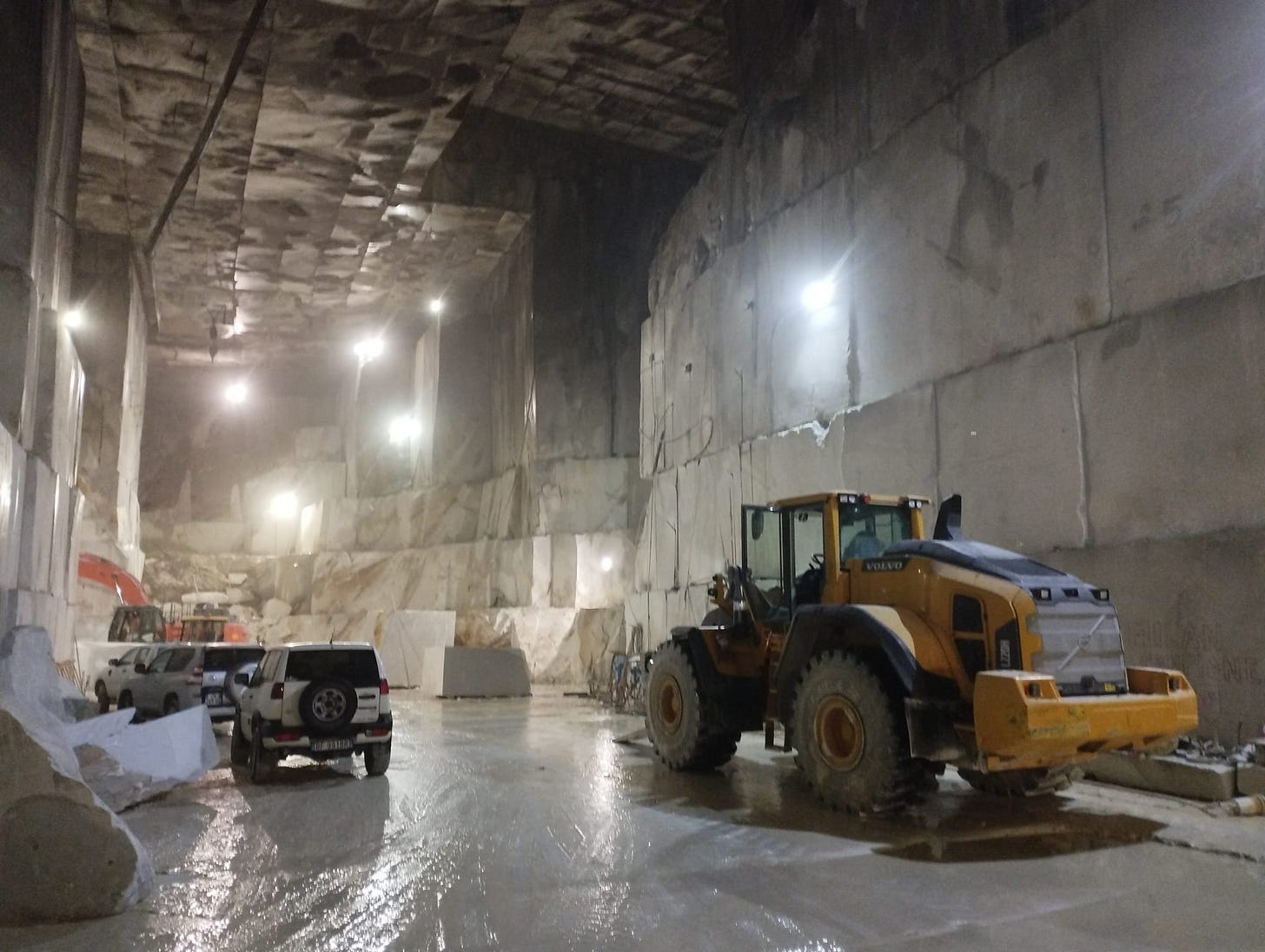
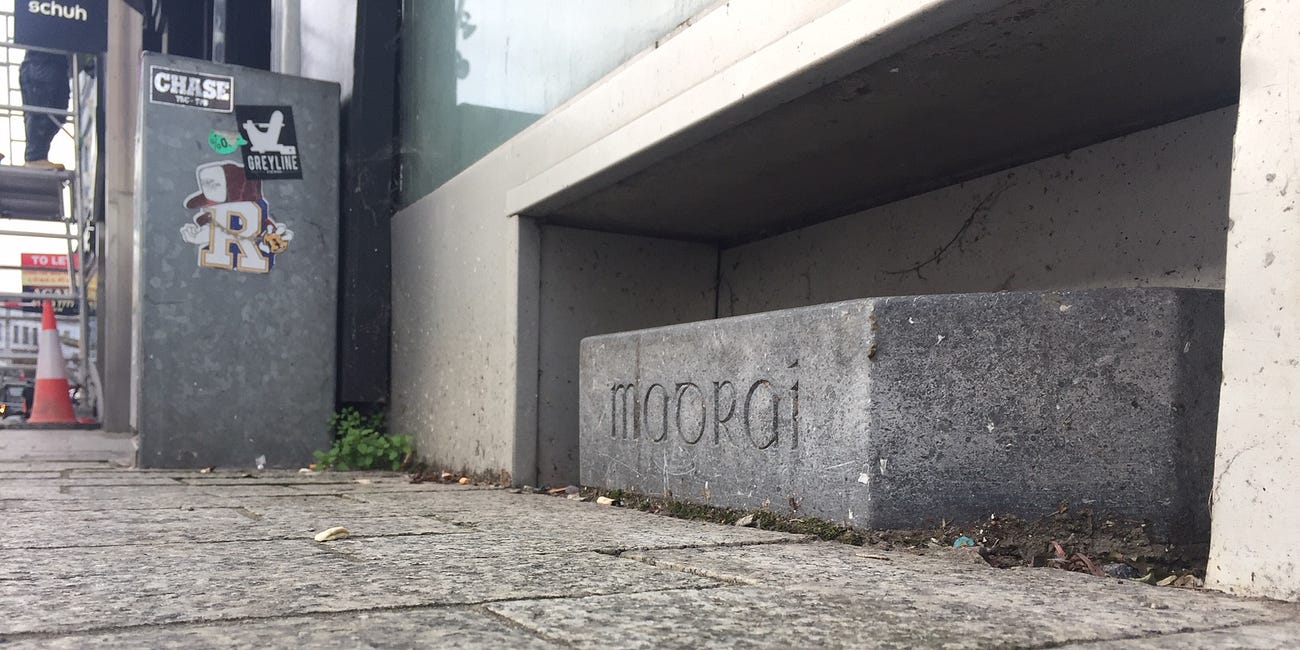
They're officially being launched tmrw, April 17